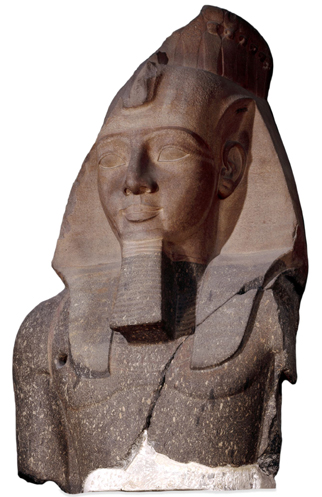2 A modern view of ancient Egypt
At first sight, nothing could seem further from the art of ancient Egypt than the Degas painting.
One of the commonest ideas about ancient Egypt is that very little changed; that for an incredibly long time, literally thousands of years, Egyptian society remained set in its ways.
If asked to characterise what was distinctive about Egyptian art, most people would use words like ‘static’ or ‘monumental’. We tend to think of:
- solid stone statues
- expressionless kings that never seem to change
- the pyramids – themselves almost symbols of eternity.
To begin the process of understanding an ancient perspective take a look at Figure 2 and then answer the questions below.

What is the subject of this sculpture?
It is a sculpture of a human head. The head is wearing what appears to be a fragment of a crown. Judging by its monumental size therefore, it is likely to be of a king. (As the caption reveals, it is the head of Rameses II, one of the greatest of the ancient Egyptian pharaohs.)
How has it been made?
It has been carved out of a block of stone, a kind of granite, which is very hard. So a lot of effort has been expended on it – especially when you consider this is only part of what would have been a much larger piece.
How would you characterise its effect?
The intended effect seems to be one of power and authority. Given its size, the king would always appear to be looking down on a viewer – and such a piece was obviously meant to be viewed by the subjects of the semi-divine monarch. Whether this is seen as a beneficent or authoritarian representation of power is relative to the viewer. Presumably, to the ancient Egyptians themselves, it would have been the former; to the Romantic poet Shelley in his sonnet ‘Ozymandias’, it was very much the latter.
